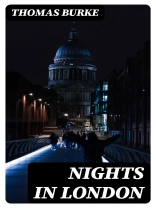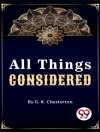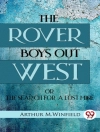In ‘Nights in London, ‘ Thomas Burke crafts a vivid tapestry of early 20th-century London, illuminating the city’s nightlife with gritty realism and poetic lyricism. The work is structured as a series of interconnected vignettes that capture the lives of various inhabitants, from the commonplace to the extraordinary, revealing their dreams, struggles, and desires amidst the exhilarating chaos of the metropolis. Burke’s innovative literary style blends naturalism with impressionistic elements, creating an immersive experience that encapsulates the sounds, sights, and rhythms of a city in flux. Thomas Burke, born in 1886 in the East End of London, had a profound affinity for the diverse and often marginalized voices of his city. His upbringing in a working-class environment, combined with his passion for journalism and the arts, deeply informed his perspective on urban life. Burke’s experiences as a chronicler of London’s social fabric during the tumultuous years of World War I enriched his narrative, allowing him to capture poignant moments of humanity amid the backdrop of a rapidly changing society. This book is highly recommended for readers interested in social realism and literary depictions of urban life. Burke’s keen observations and evocative prose offer a deep, resonant look into the hearts and minds of Londoners, making this work an essential read for anyone looking to understand the complex tapestry of human experience in one of the world’s great cities.
A propos de l’auteur
Thomas Burke (1886–1945) was a British author renowned for his keen observations and portrayals of life in early 20th-century London. With a literary career that began in the 1910s, he became best known for his collection of short stories titled ‘Limehouse Nights’ (1916), which depicted the sordid and exotic aspects of the London district Limehouse, often focusing on the Chinese community there. Burke’s style was characterized by a blend of naturalism and romanticism, painted with a vivid descriptive quality that brought the streets of London to life for his readers. His works display a strong empathy for the disadvantaged and a fascination with the variety of human experiences in the urban landscape. His book ‘Nights in London’ (1915), continued his exploration of the city’s diverse social milieus, entwining his anecdotal prowess with a love for the nocturnal city. This book, alongside his other works, contributed to the image of London in the collective consciousness, portraying it as a city of endless stories and characters. Though some of Burke’s depictions, especially those of racial and ethnic communities, have been revisited critically in subsequent literary analyses, his work remains a significant historical reflection of the era’s attitudes and a valuable resource for understanding the literary and cultural tapestry of early 20th-century London.












